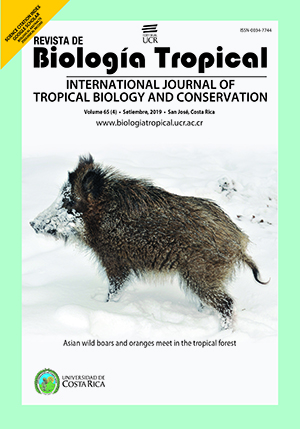Abstract
Leaf-cutting ants (Atta cephalotes Linnaeus) are one of the main insect pests in Latin America; these ants (along with Acromyrmex sp.) present a unique characteristic amongst ants – the cultivation of the Leucoagaricus gongylophorus Möller (Singer) fungus as a food source. They belong to tribe Attini and build nests in underground chambers which are interconnected by pathways. These voracious ants have attacked over 45 crop fields in Colombia. The main control method has been the use of synthetic chemical products; however, alternative control measures must be established. One alternative that has a great potential are bacteria and their secondary metabolites. The aim of this study was to evaluate the insecticidal and antifungal effect of bacterial extracts on major worker A. cephalotes ants and the L. gongylophorus fungus. A total of 118 extracts produced by the same number of bacteria were evaluated. Among the strains that produced the active extracts were Serratia sp., Xenorhabdus nematophila, Photorhabdus sp., and Bacillus thuringiensis. Seventeen (17) extracts showed insecticidal activity upon contact, 13 by ingestion, while 8 showed antifungal activity that was statistically significant. In total, 23 bacterial extracts exhibited some type of activity to control Atta cephalotes.
##plugins.facebook.comentarios##

This work is licensed under a Creative Commons Attribution 4.0 International License.
Copyright (c) 2019 Adriana Ortiz Reyes






